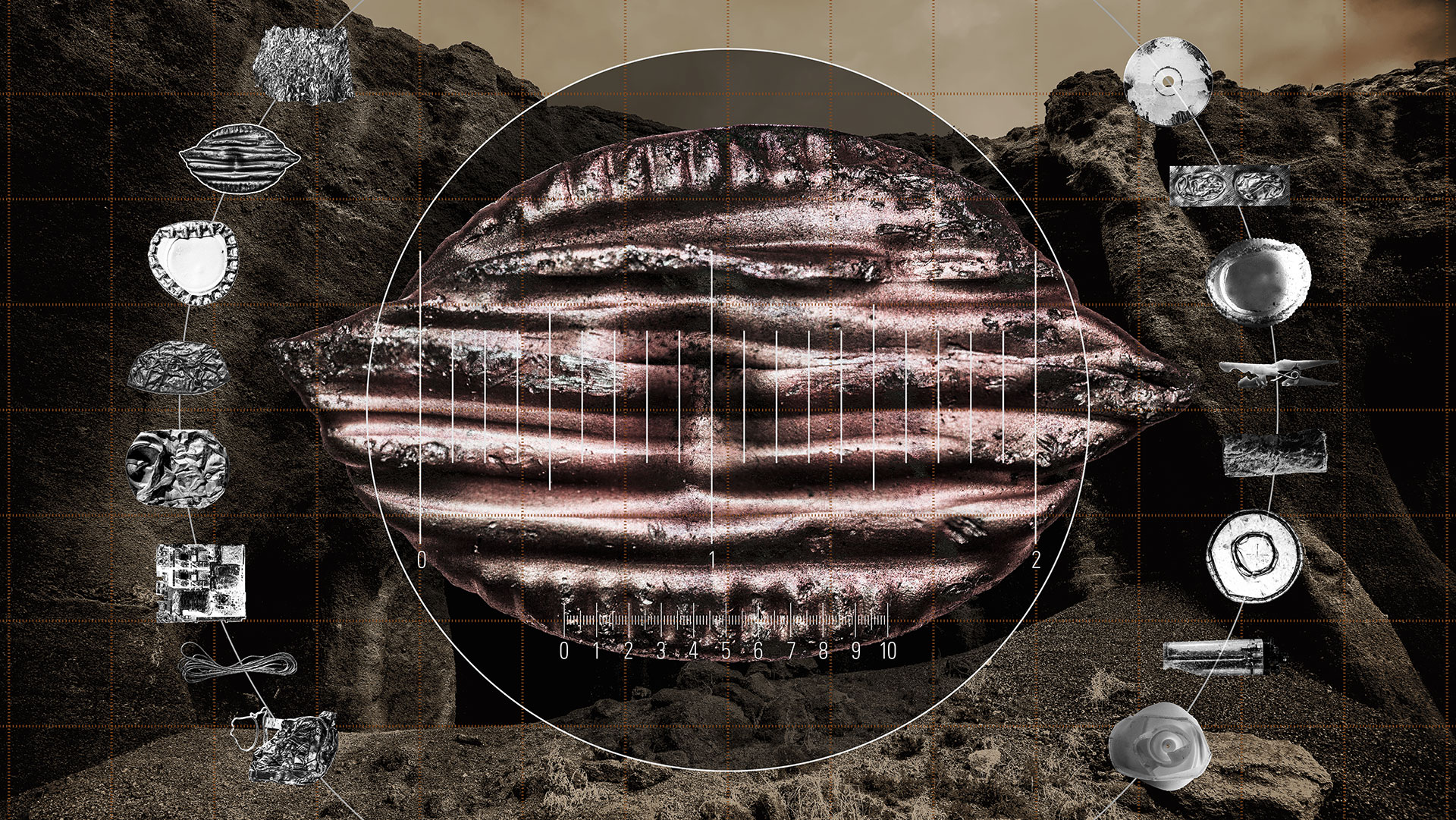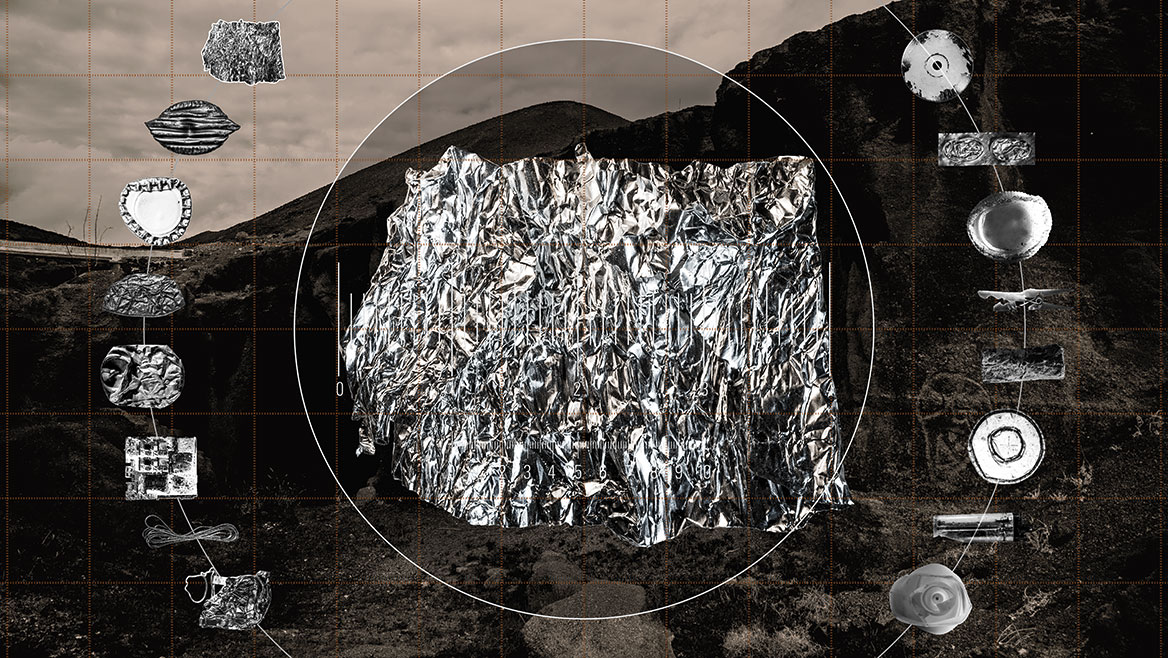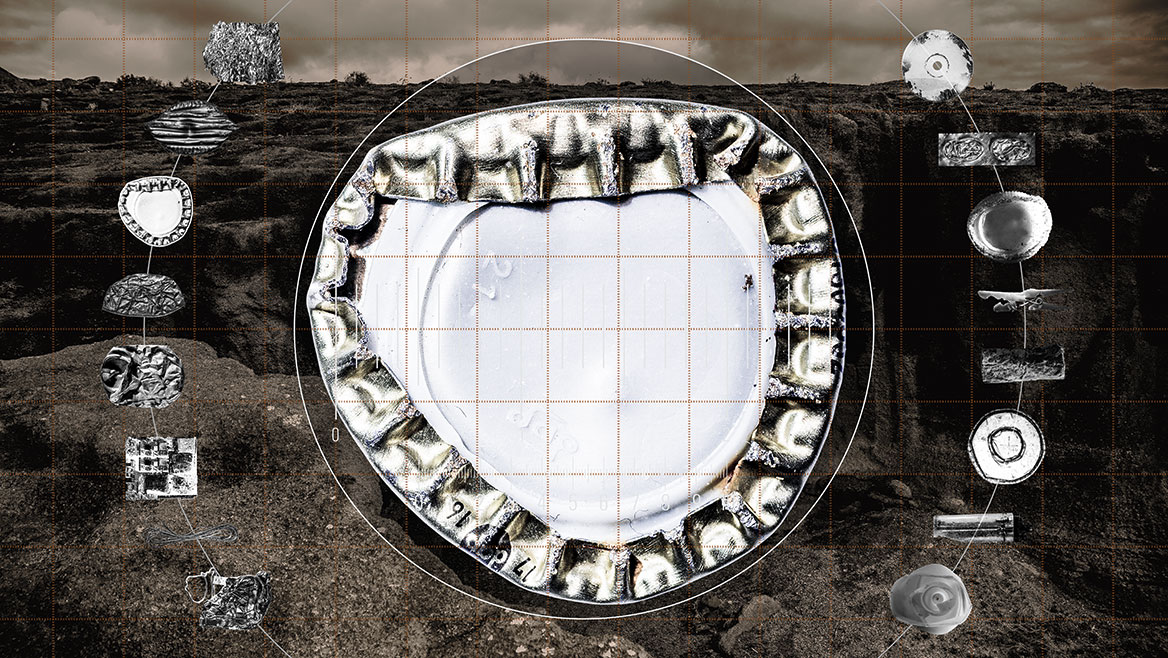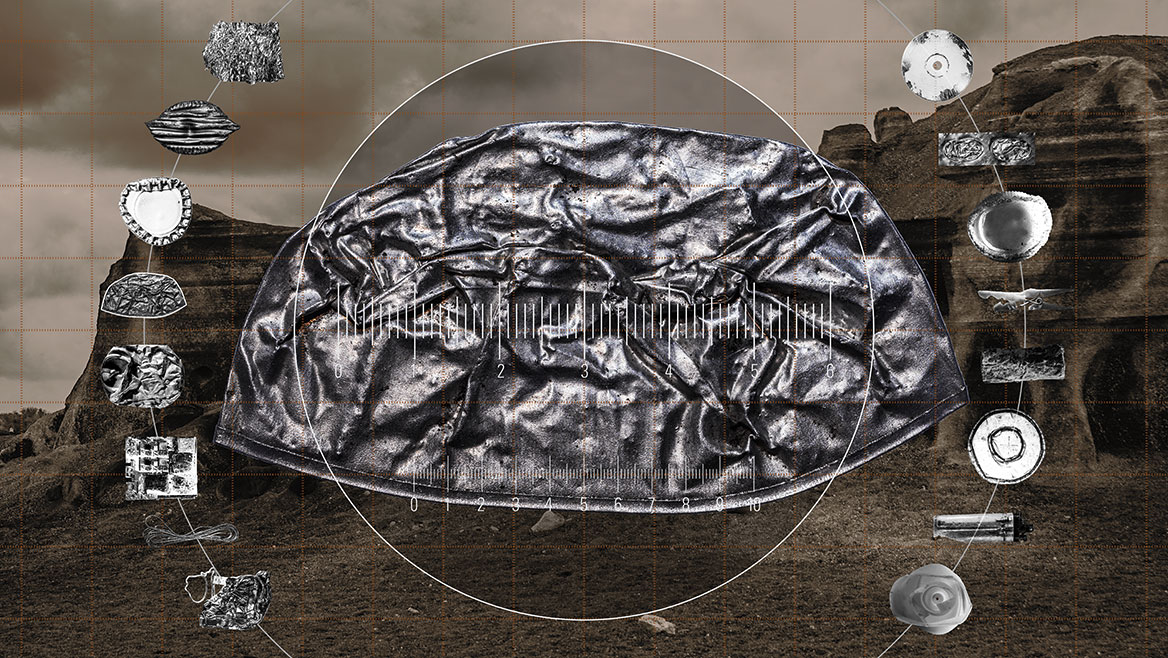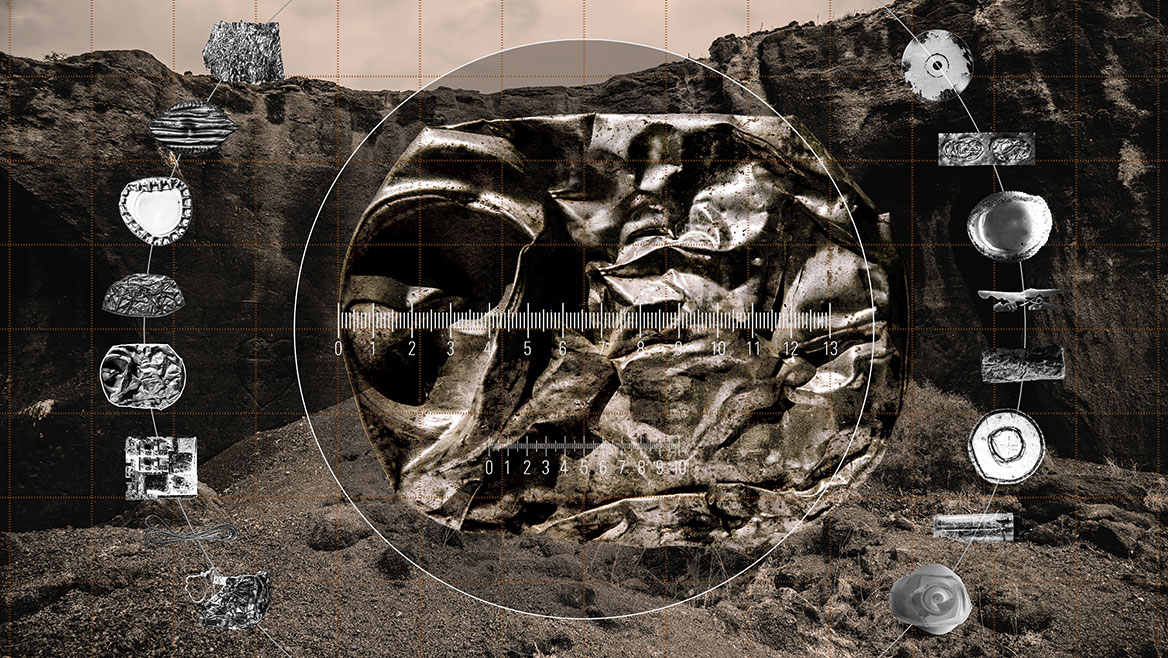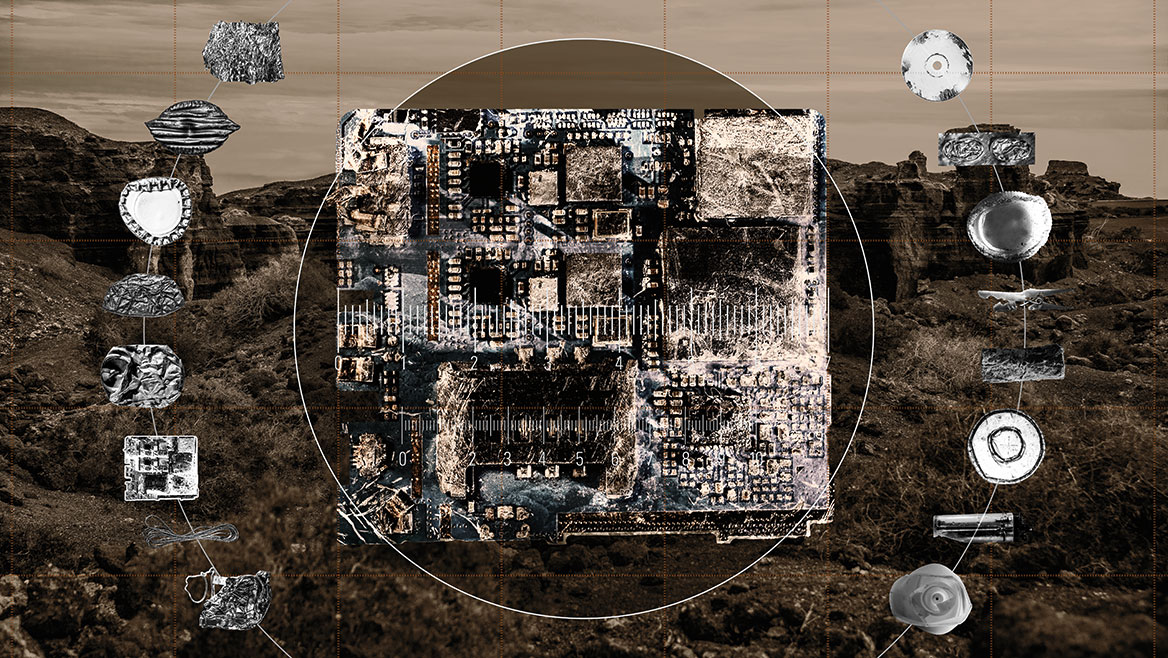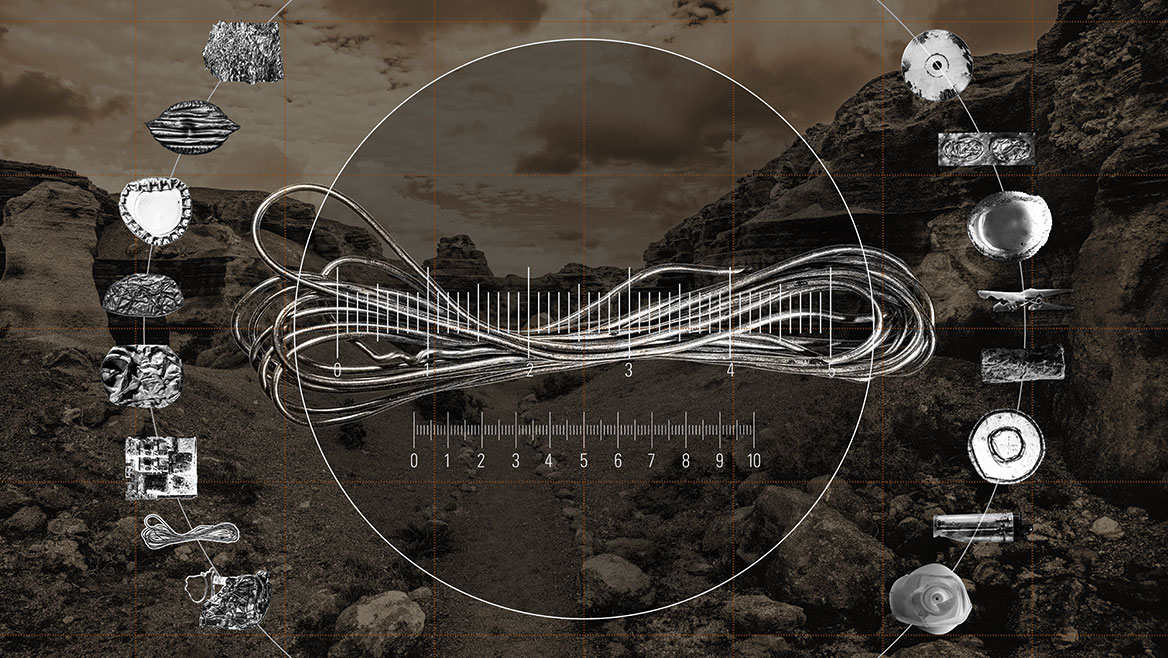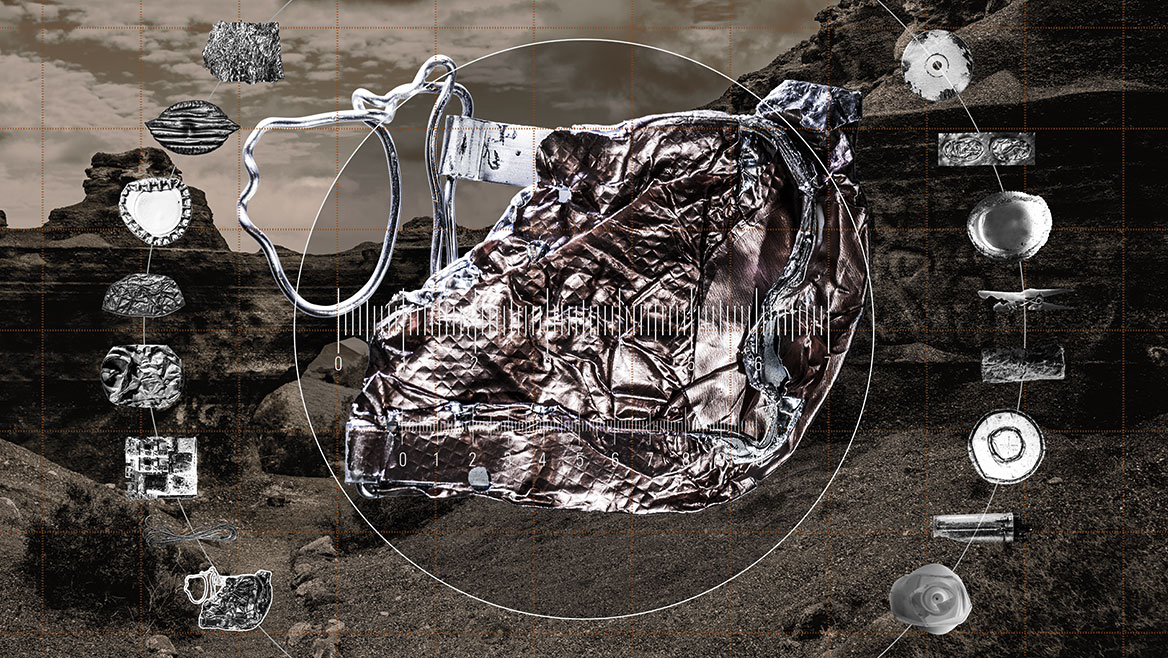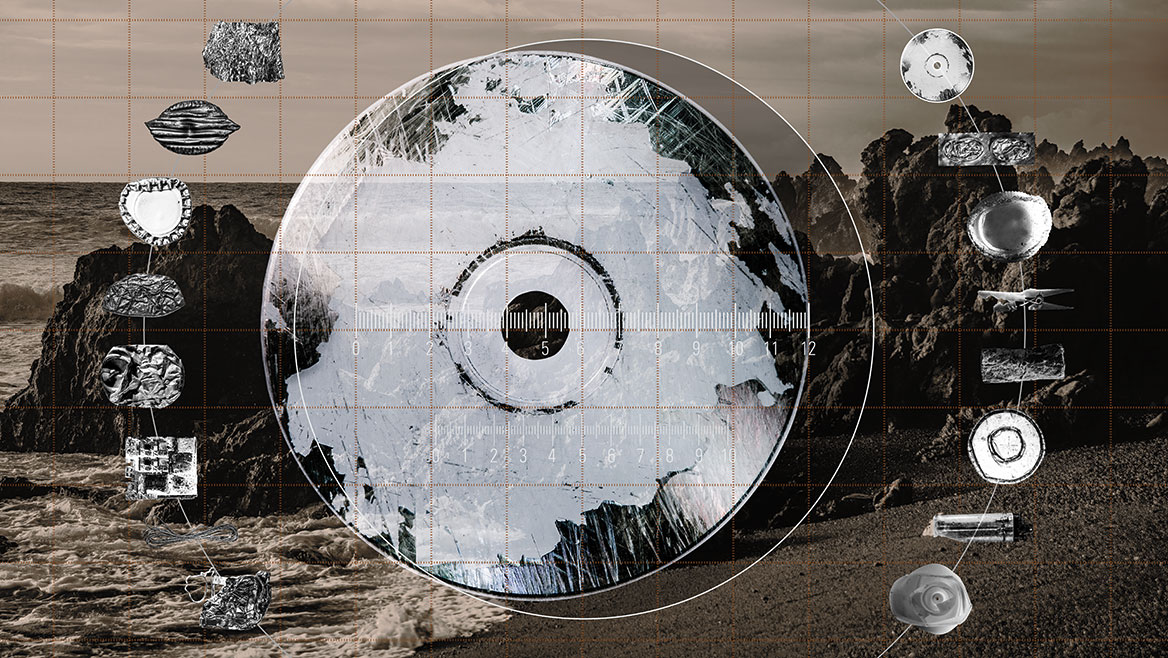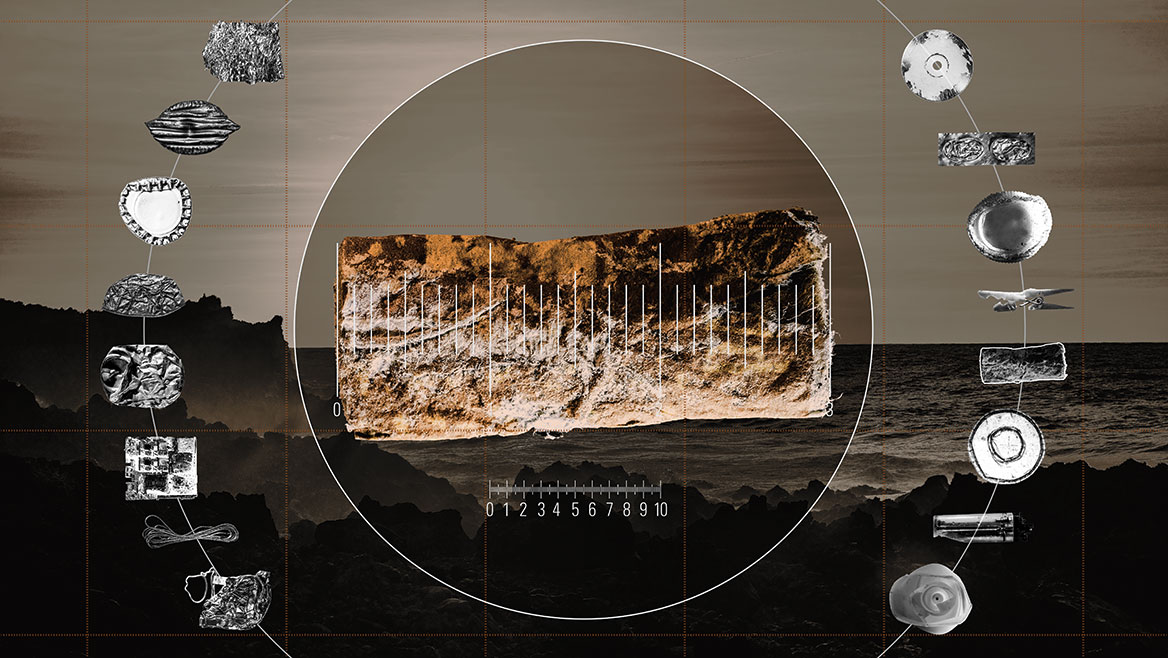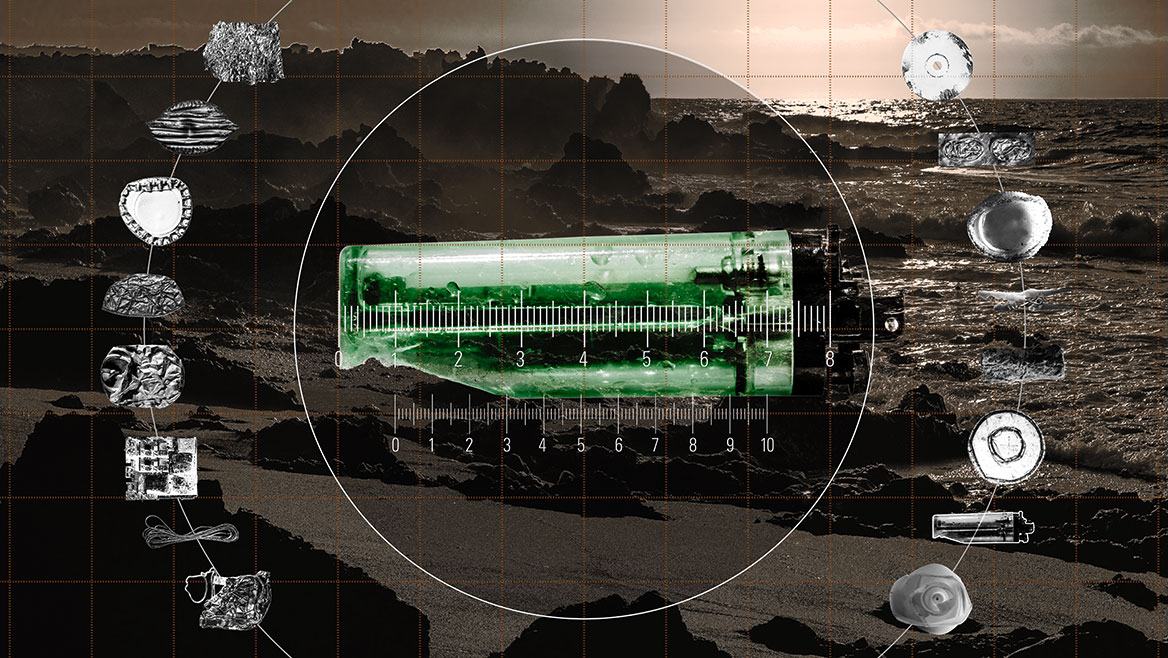This work is protected by copyright in all its parts.
© 2022 by Heinz Hermann Maria Hoppe. All rights reserved.
Color and tone value representations on monitors deviate from the original.
‘Exploration of the Wastelands’ : : : Compositings
‘What Were Their Eating Habits Like?’ from the picture series ‘Exploration of the Wastelands’ / 2022 / Compositing / Exposure on Fujiflex photo paper / 13.8″ (H) ∙ 24.4″ (W) / 4,144 Pixel (H) ∙ 7,366 Pixel (W) / Limited edition: 3 + 1 AP / Signed, handwritten titled and dated with year.
‘What Kind of Food Did They Stockpile in Their Dwellings?’ from the picture series ‘Exploration of the Wastelands’ / 2022 / Compositing / Exposure on Fujiflex photo paper / 13.8″ (H) ∙ 24.4″ (W) / 4,144 Pixel (H) ∙ 7,366 Pixel (W) / Limited edition: 3 + 1 AP / Signed, handwritten titled and dated with year.
‘What Rituals Did the Many Objects Without Functions Serve?’ from the picture series ‘Exploration of the Wastelands’ / 2022 / Compositing / Exposure on Fujiflex photo paper / 13.8″ (H) ∙ 24.4″ (W) / 4,144 Pixel (H) ∙ 7,366 Pixel (W) / Limited edition: 3 + 1 AP / Signed, handwritten titled and dated with year.
‘Why Were the Packages Often More Valuable Than the Goods They Contained?’ from the picture series ‘Exploration of the Wastelands’ / 2022 / Compositing / Exposure on Fujiflex photo paper / 13.8″ (H) ∙ 24.4″ (W) / 4,144 Pixel (H) ∙ 7,366 Pixel (W) / Limited edition: 3 + 1 AP / Signed, handwritten titled and dated with year.
‘Why Did They Spend So Much Energy Producing Variations of Products With the Same Functions?’ from the picture series ‘Exploration of the Wastelands’ / 2022 / Compositing / Exposure on Fujiflex photo paper / 13.8″ (H) ∙ 24.4″ (W) / 4,144 Pixel (H) ∙ 7,366 Pixel (W) / Limited edition: 3 + 1 AP / Signed, handwritten titled and dated with year.
‘Why Did They Bury Utensils and Tools in Mint Condition?’ from the picture series ‘Exploration of the Wastelands’ / 2022 / Compositing / Exposure on Fujiflex photo paper / 13.8″ (H) ∙ 24.4″ (W) / 4,144 Pixel (H) ∙ 7,366 Pixel (W) / Limited edition: 3 + 1 AP / Signed, handwritten titled and dated with year.
‘Why Did They Use Elaborately Manufactured Products Only for a Short Time?’ from the picture series ‘Exploration of the Wastelands’ / 2022 / Compositing / Exposure on Fujiflex photo paper / 13.8″ (H) ∙ 24.4″ (W) / 4,144 Pixel (H) ∙ 7,366 Pixel (W) / Limited edition: 3 + 1 AP / Signed, handwritten titled and dated with year.
‘How Was Propaganda Spread Among Them, How Were Consumption Patterns Conditioned?’ from the picture series ‘Exploration of the Wastelands’ / 2022 / Compositing / Exposure on Fujiflex photo paper / 13.8″ (H) ∙ 24.4″ (W) / 4,144 Pixel (H) ∙ 7,366 Pixel (W) / Limited edition: 3 + 1 AP / Signed, handwritten titled and dated with year.
‘Why Were Diseases of the Mind and Spirit So Common?’ from the picture series ‘Exploration of the Wastelands’ / 2022 / Compositing / Exposure on Fujiflex photo paper / 13.8″ (H) ∙ 24.4″ (W) / 4,144 Pixel (H) ∙ 7,366 Pixel (W) / Limited edition: 3 + 1 AP / Signed, handwritten titled and dated with year.
‘Why Did They Enrich Their Drinking Water and Fish With Plastic Particles?’ from the picture series ‘Exploration of the Wastelands’ / 2022 / Compositing / Exposure on Fujiflex photo paper / 13.8″ (H) ∙ 24.4″ (W) / 4,144 Pixel (H) ∙ 7,366 Pixel (W) / Limited edition: 3 + 1 AP / Signed, handwritten titled and dated with year.
‘How Did the Vast Quantities of Plastic Products End up in the Sea?’ from the picture series ‘Exploration of the Wastelands’ / 2022 / Compositing / Exposure on Fujiflex photo paper / 13.8″ (H) ∙ 24.4″ (W) / 4,144 Pixel (H) ∙ 7,366 Pixel (W) / Limited edition: 3 + 1 AP / Signed, handwritten titled and dated with year.
‘Why Did They Voluntarily Inhale Toxic Substances?’ from the picture series ‘Exploration of the Wastelands’ / 2022 / Compositing / Exposure on Fujiflex photo paper / 13.8″ (H) ∙ 24.4″ (W) / 4,144 Pixel (H) ∙ 7,366 Pixel (W) / Limited edition: 3 + 1 AP / Signed, handwritten titled and dated with year.
‘What Was Their Daily Life Like?’ from the picture series ‘Exploration of the Wastelands’ / 2022 / Compositing / Exposure on Fujiflex photo paper / 13.8″ (H) ∙ 24.4″ (W) / 4,144 Pixel (H) ∙ 7,366 Pixel (W) / Limited edition: 3 + 1 AP / Signed, handwritten titled and dated with year.
‘What Inventions Shaped Their Consumer Behavior?’ from the picture series ‘Exploration of the Wastelands’ / 2022 / Compositing / Exposure on Fujiflex photo paper / 13.8″ (H) ∙ 24.4″ (W) / 4,144 Pixel (H) ∙ 7,366 Pixel (W) / Limited edition: 3 + 1 AP / Signed, handwritten titled and dated with year.
‘Why Did They Use Their Containers Only Once?’ from the picture series ‘Exploration of the Wastelands’ / 2022 / Compositing / Exposure on Fujiflex photo paper / 13.8″ (H) ∙ 24.4″ (W) / 4,144 Pixel (H) ∙ 7,366 Pixel (W) / Limited edition: 3 + 1 AP / Signed, handwritten titled and dated with year.
Comment
Author: Heinz Hermann Maria Hoppe
Exploration of the Wastelands : : :
Digital Art
At Playa de Famara, the surfer’s paradise on Lanzarote, which is surrounded by waves, the white sandy beach alternates with lava rock in the upper area. In a narrow band created by the flood, unnatural colors shine against the now dark background. Plastic particles have formed a new kind of ‘shore zone’. The artificial stones do not come from the island, however; they were washed ashore by the Atlantic Ocean.
A piece of plastic with a volume of only one cubic centimeter, evenly reduced, results in one thousand fragments of one cubic millimeter each, or ten billion particles of one hundred cubic micrometers each. Because we are the last link in the food chain, the plastic we dispose of ends up being a boomerang for us. Via natural cycles, through ocean and air currents, fish dishes and drinking water, we dump it back into our stomachs and alveoli. For the most part, however, our fast-paced, waste-producing consumer cycles are destroying the habitats of our original companions: corals are suffocating under industrial effluents, whales are dying from clogged plastic bottles and foils, birds are drowning in the cesspools of former freshwaters, elephants are grazing landfills with exported, deadly waste, insects are shriveling into lifeless biomass on poisoned monoculture fields.
A banana peel may rot in two years, a tin can in five hundred years, a plastic bottle in a thousand years. We often do not know exactly yet, because artificial materials have not existed in natural areas for so long. What is certain is that we will map the epoch of our existence in future layers of the earth: in the form of infinite cubic meters of concrete and tar dust from buildings and roads, in the form of enormous masses of metal scrap from avalanches of sheet metal, in the form of mountains of garbage. Scientists have christened this geochronological epoch after us ‘Anthropocene’.
What conclusions will future archaeologists draw from analyzing the layers of the earth of our time as they dig after our history, – just as we try to figure out the lives of our ancestors? What discoveries will future generations uncover at the level of our bones? What messages will they decipher? What will they discover about our cultural level? What will the things discovered reveal about our thinking and about our actions? What image and facts do we want to leave behind?

